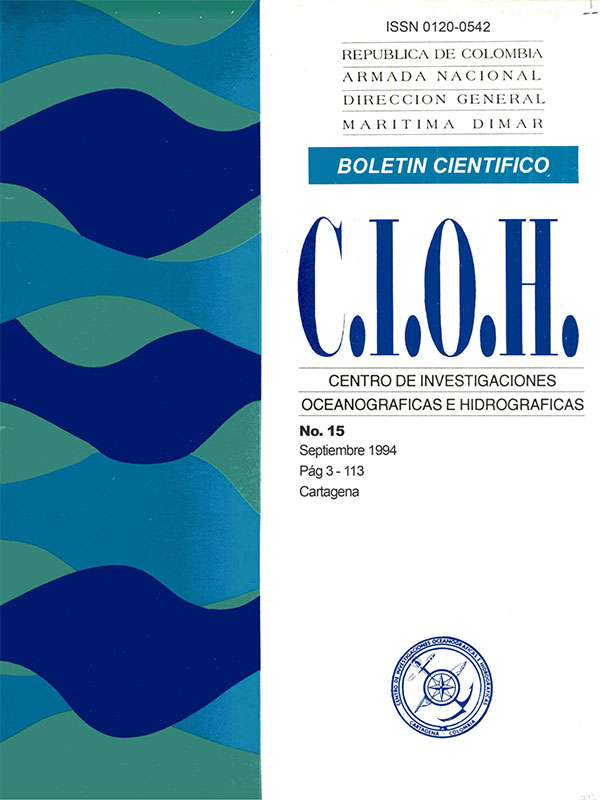Dinámica marina y sus efectos sobre la geomorfología del Golfo de Morrosquillo
DOI:
https://doi.org/10.26640/22159045.74Keywords:
Colombia, Río Sinú, Golfo de Morrosquillo, meteorolgía, oceanografía, sedimentología, imagen de satélite, SPOTAbstract
This report presents the results from a meteorological and sedimentological study, of the Golfo de Morrosquillo during the dry season (February/93), where the speed and direction of the wind acted as determinant factors in the circulation of the waters, which was defined from the following parameters: Distribution of the (haline) and thermal fields, transit of the sediment deposited on the surface of the marine bottom, horizontal and vertical repartition of turbidity, determined on samples and gauging and analysis of a SPOT satellite image.
The morphologic analysis through the comparison of the coastal line images and aereal photographies from different years, allowed to establish the principal coast morphologic variations in these zones.
The effect of diffraction and refraction of the surf front the Punta San Bernardo and the compensation arriving to the Mestizos arrows, and the flow originated by the winds produces to principal currents: One in direction south-east starting form Punta San Bernardo, that is displaced toward the east of the Gulf and the other east skirting the coast south and south-east.
The principal morphological changes of the coastal line were introduced in the south sector of the Gulf. As result of the process of sedimentary accretion originated starting 1938 the delta of the Sinú river as its discharges in the Tinajones zone, evolution that continues. The erosive phenomen on has affected considerably the body of the Mestizos arrow, the marine terrace east of the spike and the sector of beaches between Coveñas and Tolú.
Downloads
References
GALLOWAY, W., "Process Framework for Describing the Morphologic and Statigraphic Evolution of Deltaic Depositional Systems", (1975).
GUHL, E., "Colombia: Bosquejo de su Geografía Tropical", Tomo I. Instituto Colombiano de Cultura. Bogotá, 286p 1975.
JAVELAUD, O. "La Sedimentation du Plateau Continental de la Colombie Caraibe au Cours du Quaternaire Terminal". These Doctorat, Bourdeaux I, 387p, 1987
LORIN, J., et al., "Estudio del régimen Seclimentológico del Golfo de Morrosquillo. Protección de Playas en Tolú". Informe General, 1973.
MAILL, A. "Deltas". In: Walker R.G. edt., Facies Models, Geoscience Canadá, Toronto, 1984.
ROBERTSON, K., "Evolución Reciente del Delta del Río Sinú", Colombia. Bull. Inst. Geol. Bassin de Aquitaine, Bordeaux, No. 45, p. 305-312, 1989.
Downloads
Published
Issue
Section
License
Attribution — You must give appropriate credit, provide a link to the license, and indicate if changes were made. You may do so in any reasonable manner, but not in any way that suggests the licensor endorses you or your use.
NonCommercial — You may not use the material for commercial purposes.
NoDerivatives — If you remix, transform, or build upon the material, you may not distribute the modified material.
No additional restrictions — You may not apply legal terms or technological measures that legally restrict others from doing anything the license permits.



